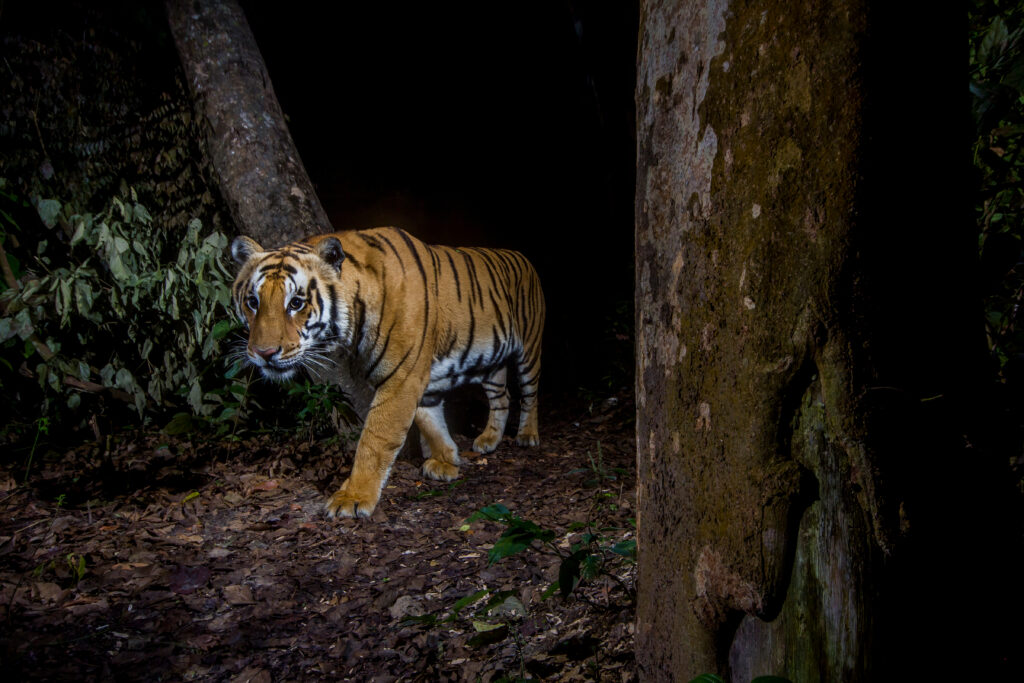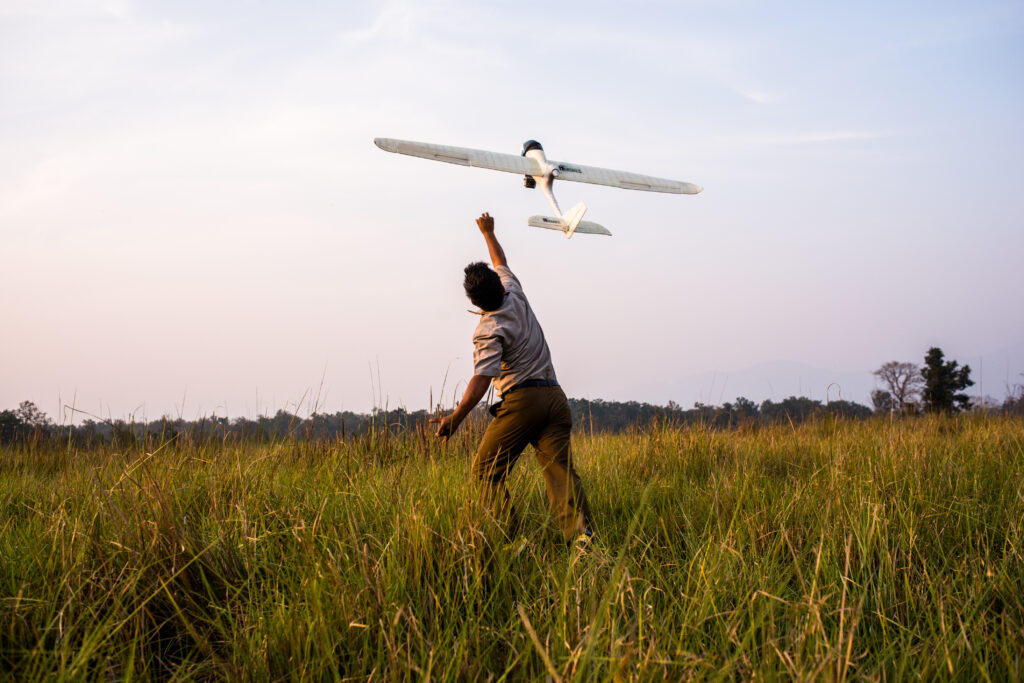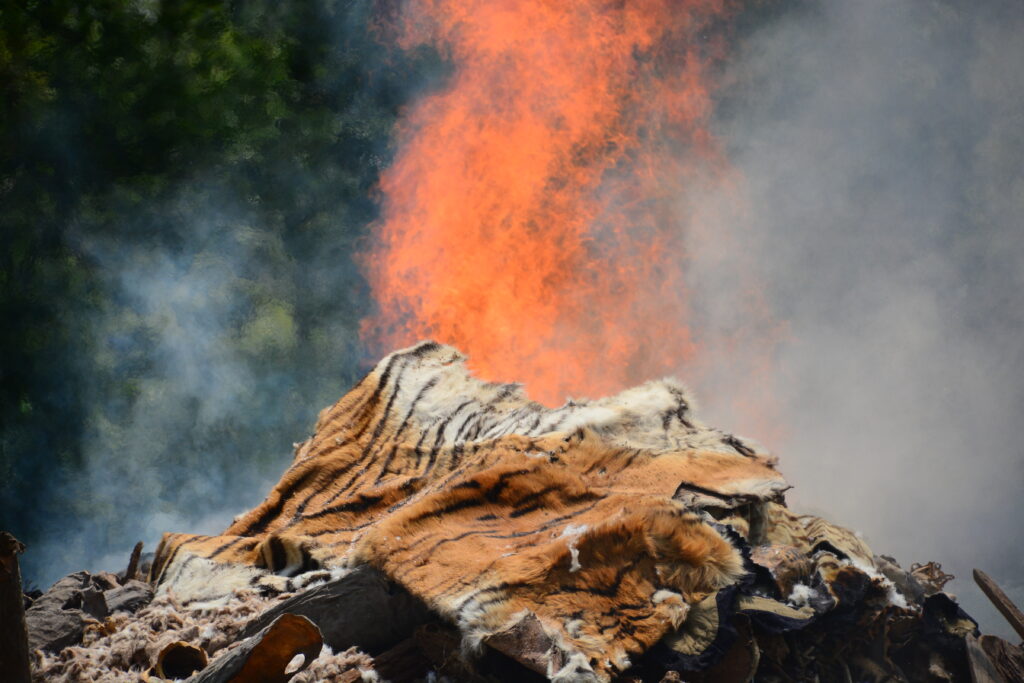Feline good: A timeline of tiger conservation in Nepal

Around 100,000 tigers roamed the jungles and mountainsides of Asia just over a century ago — before persecution, habitat loss and a decline in prey species put them on a path toward extinction.
Nepal’s dedicated efforts to recover tigers, dating back to the creation of Chitwan National Park in the early 1970s, has since made them a conservation giant.
When efforts sped up in 2010 — after all 13 tiger range countries set a goal, known as TX2, to double the world’s tiger population by 2022 — Nepal and WWF began to implement new approaches and technologies to grow the tiger population from an estimated 121 individuals to 250.
On Global Tiger Day last year, we celebrated a historic conservation victory as Nepal announced it had exceeded this goal — nearly tripling its population to 355 wild tigers! On the one-year anniversary of this win, we’re looking back on how they did it with 14 milestone moments from Nepal’s TX2 journey.
Key conservation milestones
2010: Nepal celebrated its first Global Tiger Day on July 29.
2010: To create more habitat for tigers, Nepal declared Banke a National Park. Funding from WWF-Canada has supported efforts in and around Nepal’s national parks to reduce human-tiger conflict and poaching, restore habitat and provide citizen scientists with technical expertise to monitor the growing tiger population.
2011: A satellite collared tiger is translocated from Chitwan National Park to Bardia National Park.
2012: Unmanned Aerial Vehicle (UAV), commonly known as a drone, was piloted in Chitwan National Park to boost anti-poaching efforts.

2012: Nepal’s second National Tiger Survey revealed a 63 per cent in increase in the tiger population, from 121 to 198, showing the world that doubling wild tigers is possible with political support.
2013: WWF-Nepal revolutionizes its approach to anti-poaching with the introduction of Spatial Monitoring and Reporting Tools (SMART) software. It is designed to give rangers and park managers an edge over poachers by integrating data from patrols, analyzing local poaching trends and evaluating the effectiveness of enforcement.
2014: 365 days of zero poaching of tigers is celebrated in Nepal!
2015: Conservation Assured Tiger Standards (CA|TS), which measures how friendly protected areas are for tigers, recognized Chitwan National Park as the best conservation zone for tiger protection in the world. CATS is now being considered for other big cats like snow leopards and jaguars.
2017: Parsa National Park and Shukla National Park were expanded to provide more protected habitat for their growing tiger populations.
2017: Nepal burnt its stockpile of confiscated wildlife parts, preventing them from ever ending up on the illegal market and demonstrating the nation’s commitment to ending wildlife crime.

2018: Nepal’s tiger population jumps to 235 individuals, according to the country’s third National Tiger Survey.
2020: A tiger is documented at a record-high elevation of 3,165 metres, a sign they could be dispersing to new habitats.
2022: On Global Tiger Day, Rt. Honourable Prime Minister of Nepal, Sher Bahadur Deuba, announced there are an estimated 355 wild tigers. Nepal had exceeded its TX2 goal, nearly tripling its wild tiger population in just 12 years!
2023: The Terai Arc Landscape — a corridor stretching across Nepal’s southern border with India and connects 16 protected areas to allow natural movement of tigers — is recognized by the United Nations as the “World Restoration Flagship.” This designation is given to the first, best or most promising examples of long-term ecosystem restoration around the world.
You can read complete timeline here.
What’s next?
With support from donors here in Canada, WWF has been able to pilot new approaches to tiger conservation that are being adapted to protect tigers and other species. We’ll also continue to support WWF-Nepal as they work to maintain and grow tiger populations over the long-term. Click here to learn how WWF’s Global Tiger Program plans to overcome the biggest challenges facing tigers between now and 2034, the next Year of the Tiger in the lunar calendar.


